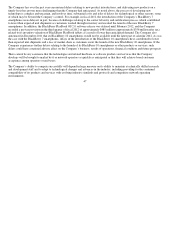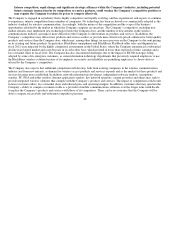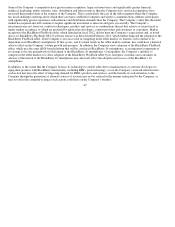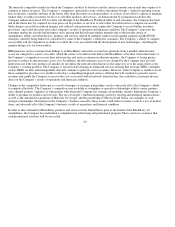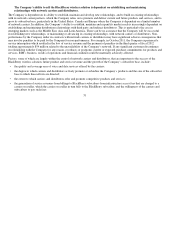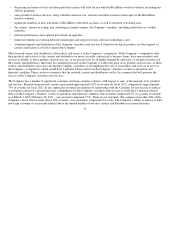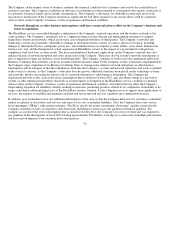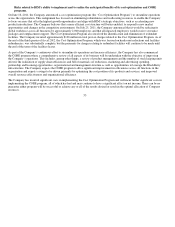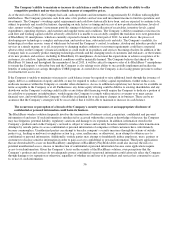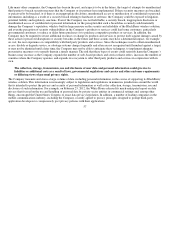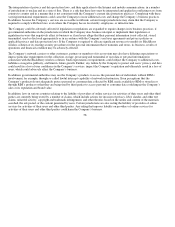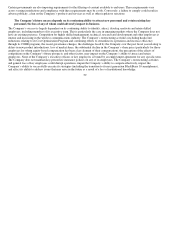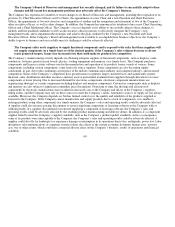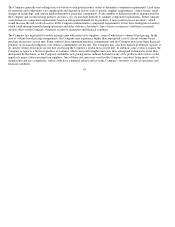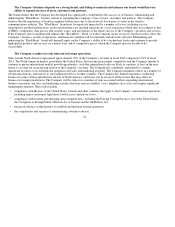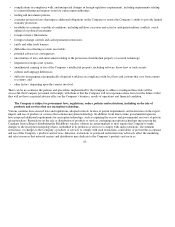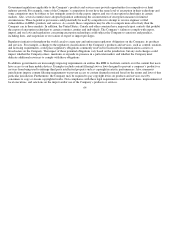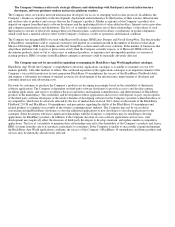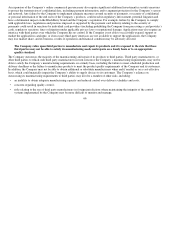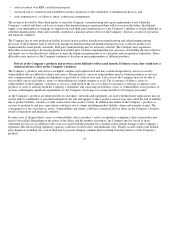Blackberry 2012 Annual Report Download - page 65
Download and view the complete annual report
Please find page 65 of the 2012 Blackberry annual report below. You can navigate through the pages in the report by either clicking on the pages listed below, or by using the keyword search tool below to find specific information within the annual report.
Like many other companies, the Company has been in the past, and expects to be in the future, the target of attempts by unauthorized
third parties to breach security measures that the Company or its partners have implemented. If these security measures are breached,
or perceived to be breached, or if there is an inappropriate disclosure, unauthorized access or misdirection of confidential or personal
information, including as a result of a security breach relating to hardware or software, the Company could be exposed to litigation,
potential liability and regulatory sanctions. Even if the Company was not held liable, a security breach, inappropriate disclosure or
unauthorized access of confidential or personal information (or the perception that such a breach has occurred) could materially
damage the Company’s reputation, which is built in large measure on the security and reliability of the BlackBerry wireless solution,
and even the perception of security vulnerabilities in the Company’s products or services could lead some customers, particularly
governmental customers, to reduce or delay future purchases or to purchase competitive products or services. In addition, the
Company may be required to invest additional resources or change its products and services to protect itself against damage caused by
these actual or perceived disruptions or security breaches in the future and these actions may have a detrimental impact, for example
on cost, the user experience or compatibility with third party products and services. Since the techniques used to obtain unauthorized
access, disable or degrade service, or sabotage systems change frequently and often are not recognized until launched against a target,
or may not be identified until a later time, the Company may not be able to anticipate these techniques, to implement adequate
preventative measures or to remedy them in a timely manner. The risk that these types of events could seriously harm the Company’s
business may increase as the Company expands the number of web-based products and services that it offers, increases the number of
countries where the Company operates, and expands its ecosystem to offer third party products and services in conjunction with its
own.
The collection, storage, transmission, use and disclosure of user data and personal information could give rise to
liabilities or additional costs as a result of laws, governmental regulations and carrier and other customer requirements
or differing views of personal privacy rights.
The Company transmits and stores a large volume of data, including personal information, in the course of supporting its BlackBerry
wireless solution. This information is increasingly subject to legislation and regulations in numerous jurisdictions around the world
that is intended to protect the privacy and security of personal information as well as the collection, storage, transmission, use and
disclosure of such information. For example, on February 23, 2012, the White House released its much-anticipated report on data
privacy that focused on the use and handling of personal data by private-sector entities in commercial settings and, among other
things, encouraged the United States Congress to enact data privacy legislation. In addition, a number of leading companies in the
mobile communications industry, including the Company, recently agreed to privacy principles designed to prompt third-party
application developers to conspicuously post privacy policies with their applications.
57


